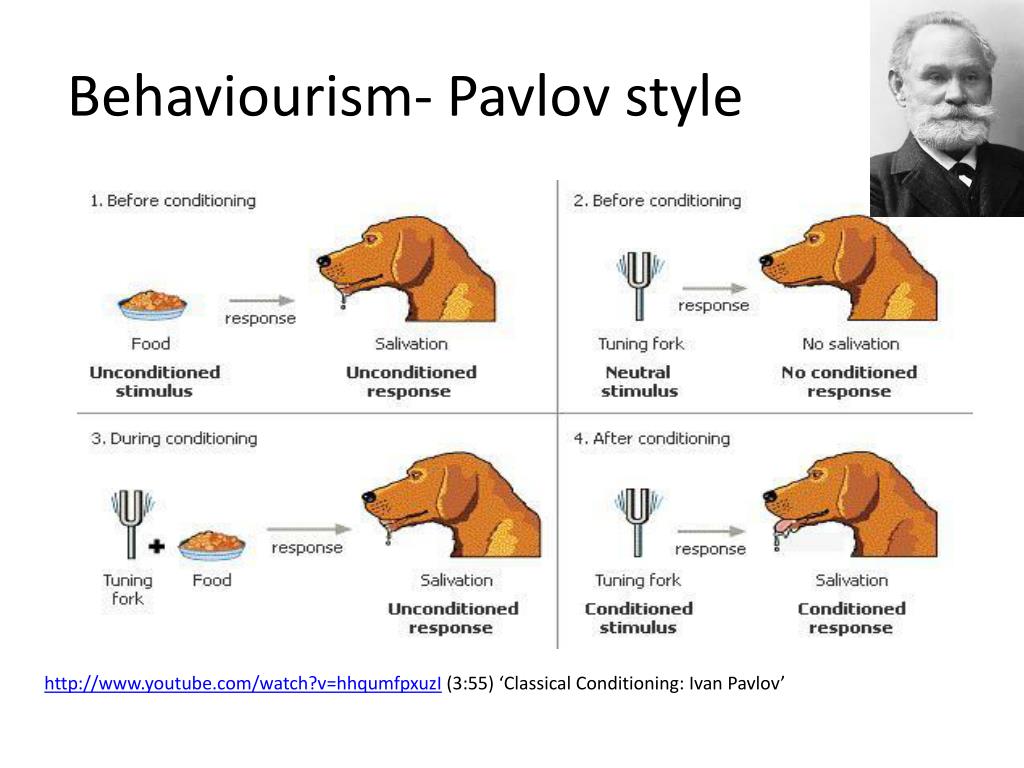
In the second stage a bell was rung whilst food was being served to the dogs, this was done multiple times to condition them and make them associate the ringing of the bell with eating time as that is not what they were accustomed to before, resulting, once again in them salivating. The food is seen as an unconditioned stimulus and the saliva, an unconditioned reflex as it is involuntary and untaught. The dogs had a tube surgically implanted in their saliva glands and this is how their saliva was collected (Learning theories, 2014). During the experiment the dogs were restrained in an experiment chamber where they were given food in the form of meat powder. The experiment was carried out by using hungry dogs that when showed food, would salivate. The aim of the experiment was to associate an unrelated unconditioned stimulus with a conditioned stimulus to produce a conditioned response, which is a behavioural response (Lumen learning, n.d.). Ivan Pavlov made use of dogs for his experiment to prove the classical conditioning process. In this essay, I will be going into detail about the experiment that served as proof of the classic conditioning process as well as its outcomes. It is one of many perspectives used to explain the learning processes, discovered in 1897 and also known as the Pavlovian Theory (Wikipedia, 2019). Ivan Petrovich Pavlov was a Nobel Prize winning Russian physiologist most famous for his discovery of the classical conditioning process. Ivan Pavlov’s Classical Conditioning Process

The second part of my assignment is about the four different stages of lifespan and career development and how they interlink. As each human being grows up, they reach milestones and are constantly evolving, the same can be said career – wise.

The first part of my assignment is an essay on his classical conditioning experiment, how it was carried out and its findings. Those names cannot be mentioned without including Ivan Pavlov, the researcher of classical conditioning which is all about learned behaviour which paved the way for a multitude of behaviour theories. who became so by giving reason and name to everyday things that happen, through theories which needed them to do endless amounts of research and experiments.

There are many great names in psychology.


 0 kommentar(er)
0 kommentar(er)
